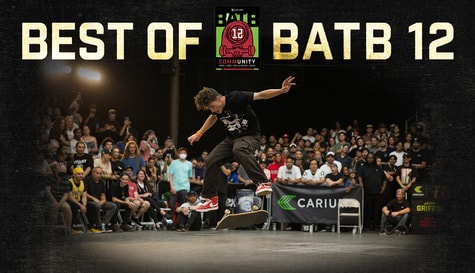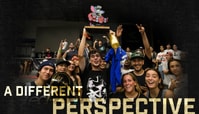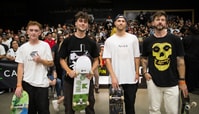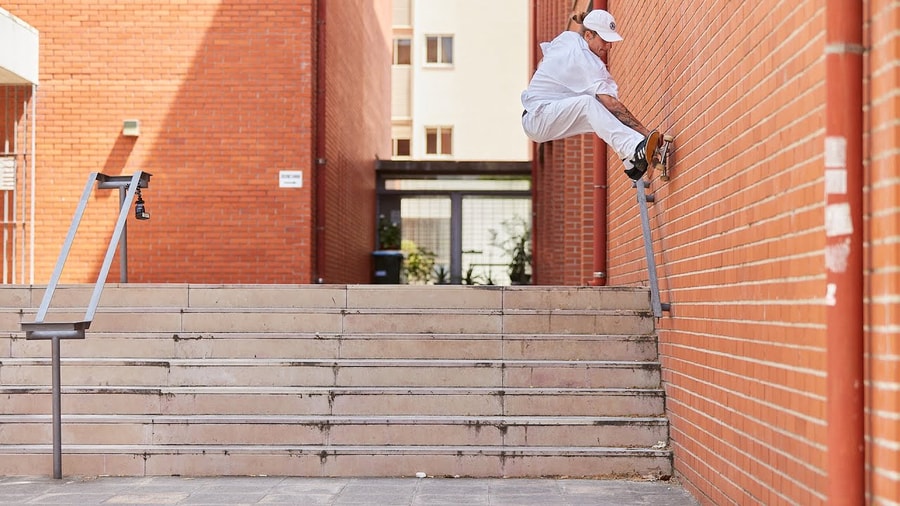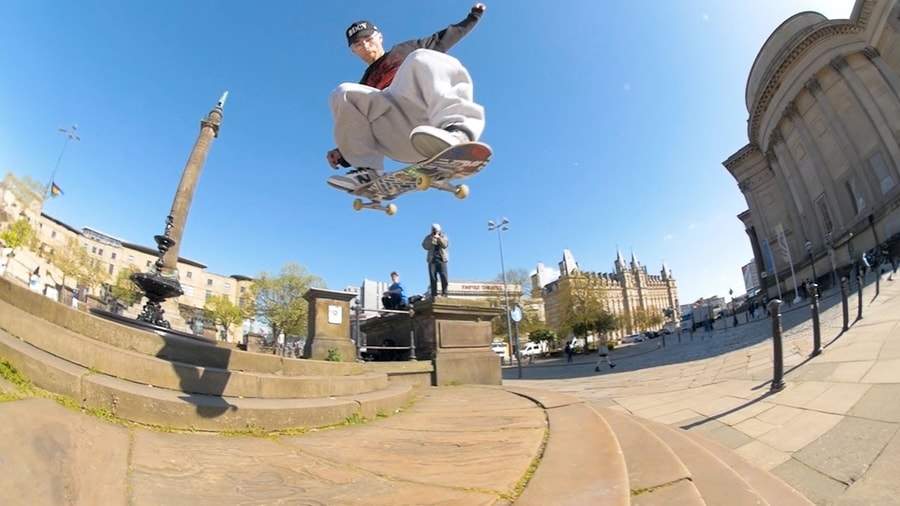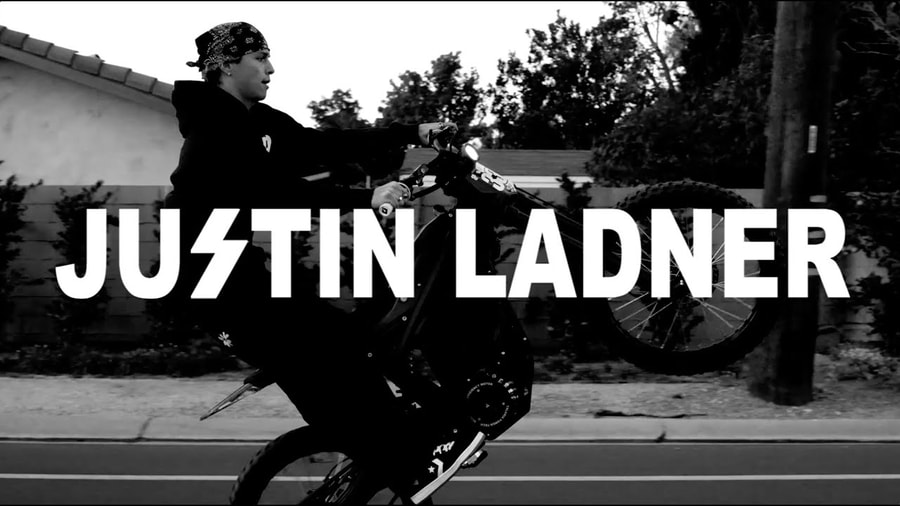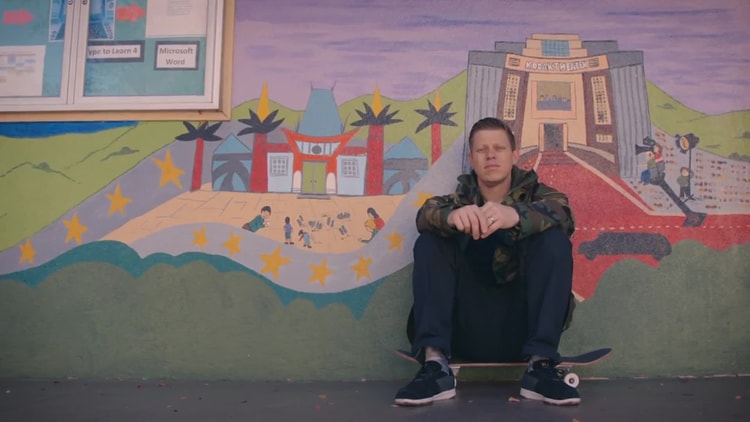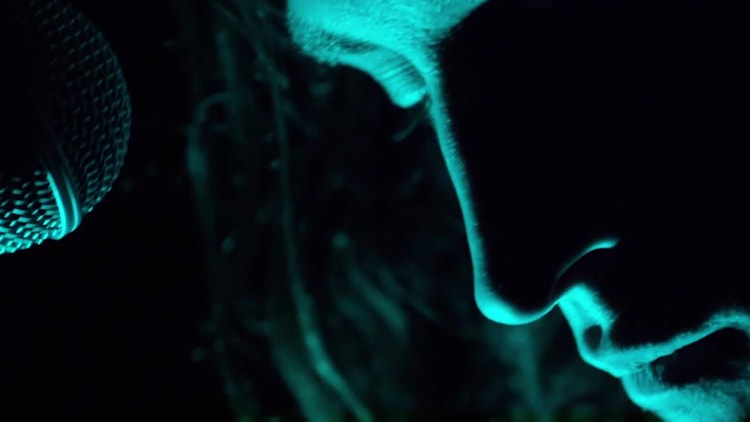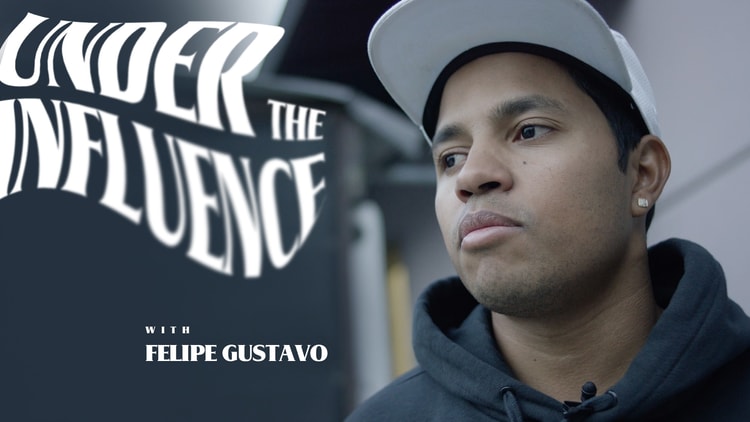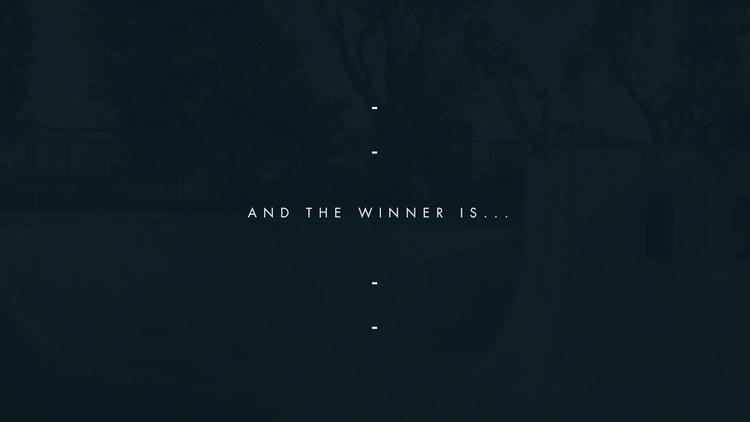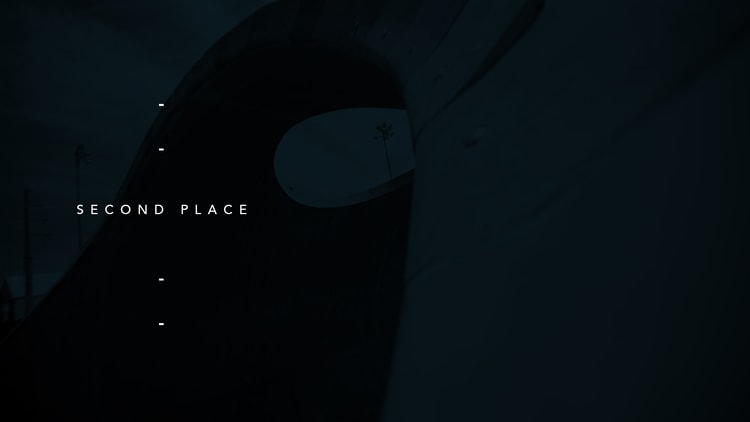RAY BARBEE – MILESTONE — From The Skateboard Mag Issue 75

RAY BARBEE: MILESTONE
text by rob brink • photography by anthony acosta
“When someone’s heart isn’t in something, you can see it. They’re just going through the motions. I don’t want to be that person,” says Ray Barbee, now pro for over twenty years, reflecting on the thought of eventually retiring from professional skateboarding.
“My good friend Salman Agah once said, ‘Skateboarding is like food. You just keep eating until you aren’t hungry anymore.’ I’m just not done yet,” continues Ray. “And I’m not ready to be done.”
Far from finished, it’s still easy for Ray to see how it all started: “I had a friend named Randy Smith who was a big influence on me when I was a kid,” Ray says. “He just looked so good when he skated. His style was kinda loose—like a rag doll. So when I met with [Sean] Cliver to do my first pro model graphic, I told him I wanted a rag doll and that’s what he came up with.”
Ray’s not one to over-analyze things—especially skateboarding—and doesn’t believe that there’s anything overtly specific or magical that contributed to the beloved, timeless, and classic nature of his Ragdoll Powell-Peralta pro model.
“Honestly,” he laughs, “I don’t have an answer for that one. It was probably just the timing and everything to do with street skating being so new back then. It was also Cliver’s first graphic, so maybe the new style of artwork had something to do with it too.”
Ray’s positivity is as sincere as can be. It’s humble and inspiring. It’s not politically correct or contrived to avoid offending anyone—Ray just perpetually sees the glass as half full. And his ability to let things exist as they are, why they are, see the good in them, and just go with the flow is one of many endearing qualities about him.
“He has such an appreciation for what he’s blessed with that it’s contagious when you are around him,” says photographer Anthony Acosta.
“Growing up in San Jose in the 80s and early 90s,” says Salman Agah, “if you didn’t know who Ray Barbee was, chances were you didn’t skate. Tales of Ray’s fast feet and continuous smile were rampant then. Ray is one of the few pros who I looked up to growing up, who wasn’t a total disappointment when we finally ended up meeting and skating together.”
“In the 80s I was asked by a magazine who the best skateboarder in the world was,” says Don Brown, pro freestyler during Ray’s rise to skate fame. “My reply, ‘the one with the biggest smile on their face.’ Which would mean that Ray Barbee is the best skateboarder in the world. But he better keep that smile going because Theotis [Beasley] is catching up fast!”
“It’s no wonder he’s always smiling,” Acosta continues, “He focuses on the good things and not the negative things. He has peace, which is transparent in his skateboarding, his music, his photography, his perspective on life and the way he interacts with people.”

Barbee’s entire career has been humble, classy, and steady. Perhaps it’s a direct result of being so content. There’s never been a “comeback” or “Barbee overkill” or any sort of overrated-ness. Only consistent good ol’ fashioned respectable, stylish, and innovative skateboarding.
“I think what makes Ray Barbee a legend, is that 21 years after Ban This, people still want him to be a part of skateboarding,” says Josh Friedberg, photographer, videographer, and founder of 411 Video Magazine.
“Guys like him need a home. They need to be in skateboarding, and we are stoked to allow him the opportunity to be himself,” says Ryan Dewitt, Element team manager, who coincidentally roomed with Ray on King of the Road 2005—prior to him riding for Element.
“He just happened to be Element’s mystery guest, hopped in the van, and it was awesome,” says Dewitt.

After The Firm disbanded, Ray was spending a lot of time giving guitar lessons and playing for the campers at Visalia Skate Camp. Since Element is a big part of the Visalia program, Ray ended up connecting with them there and got on the team.
Element recently released a twentieth anniversary Barbee board with Sean Cliver that features a new version of the Ragdoll graphic. And last year, Ray’s longtime shoe sponsor, Vans, re-released a series of four classic silhouettes and styles to commemorate his twentieth anniversary of professional skateboarding.
Even though Ray can’t even remember his last magazine interview (yes, it’s been a long time) and the public perception may be that they’ve seen more of Ray Barbee the musician than Ray Barbee the skateboarder in recent times, he’s consistently logged skate magazine coverage over the past five years. He appears in EA’s SKATE 2 as a playable character and had parts in This is My Element and Brian Lotti’s 1st & Hope, which, due to the nature of how it was conceptualized and filmed (groups of skaters performing semi-unplanned lines throughout downtown Los Angeles), was a striking parallel to Ray’s famous shared street segment of Powell-Peralta’s Public Domain, where the skateboarding masses got their first glimpses of him.

But before Ray came to be known for his street skating, like so many other skateboarders from his era, he often skated vert and backyard ramps.
“Ray was a local at our ramp, the Mush Ramp, in Cupertino, California,” says Dave Carnie. “I always liked when Ray showed up. He had an unusual, yet pleasant, vert style. And although I might be remembering this entirely wrong, I like to believe that Mush Ramp is partly responsible for his street career, because one day he was trying to learn body jars and he locked up or over-rotated or something and ate shit and broke his arm. After that, we didn’t see him at the ramp much. Next thing you know …’’

Seems like fate wanted Ray off the vert and out on the streets. And rightfully so, because part of what makes him so admired and so legendary by so many people is the very fact that he epitomizes the “just get on your board and go skate” ideology, as seen in Public Domain, Ban This, La Buena Vida, and 1st & Hope.
Despite our current era of travel to a spot, set up, film a trick, and go home, you’ll still find that droves of people gush over Ray’s old video parts and simple improvisation of cruising down the street on his board. Yet, to the contrary, today’s skate media and industry—magazines, photos, videos, contests, top pros, and hot ams—seldom reflect or portray that admiration with their actual output. Hammer time still ensues in the majority of what we see, support, and produce.
Perhaps more important, though, is that a very common and complimentary reaction to any Ray Barbee footage is that of “Damn, that part makes me want to go out and skate!”
In his episode of Epicly Later’d, Ray explained that he and his friends weren’t the first people to skate the streets the way they did, but rather, that Public Domain just brought all that was happening at the time—the street skateboarding movement (so to speak) to the masses with that segment.

In an interview for 1st & Hope, Ray said, “We never claimed to be making up anything because we figured somewhere, someone else was stumbling across the same things. We were just like, ‘Hey, let’s try this,’ and kept going with it.”
“One time,” says enjoi Brand Manager, Matt Eversole, “me and Erik Olsen (Bones Swiss Team Manager) skated down the street with Ray and it felt like we were in a Powell video. We both heard the song from his part in our head.”
“Ray’s no-complies are to die for,” says legendary street pioneer and pro Garry Davis.
“Ray was always down to skate new spots,” says his friend Richard Mulder, “not your typical go-to spots that people seem to migrate to. We would just find stuff.”
As quickly as skateboarding changes today, it’s always been that way—even for someone as casual as Ray, admitting that once Ban This began filming, he felt more pressure to put out an actual video part because it was his first part without any other skateboarders in it, as opposed to the previous video, Public Domain, which was filmed in only three days and shared the stage with Chet Thomas, Steve Saiz, and Eric Sanderson.
“In the early days, I would trip on Ray because he was already an established pro skateboarder who could get whatever he wanted for free, but he would ride the same Swiss bearings for years!” says Mulder, reminiscing of early memories of Ray. “I was always shocked to see him ride all of his stuff ’til it was done and finished. He just wore things out like any twelve-year-old would, kind of like Kenny Anderson does. And he will literally wear a piece of clothing for years, especially a button-down that he finds fitting.”
“What era of skateboarding would you most like to revisit if you could?” I asked Ray.
“Right now!” He replied emphatically.
Two simple words that speak volumes.

Ray respects, loves, appreciates, and honors his past and everyone involved in it, but he also yearns to experience the now to the fullest.
And most currently, “the now” consists of photography. With the help of photographer Joe Brook, Ray picked up his first camera in New York City about a decade ago. Since then, Ray’s been taking classes at Long Beach Community College and recently his lab instructor invited him to be a part of a photo show. So for the last few months, he’s been feverishly working in the campus darkroom preparing.
“I just have so much fun shooting. And I always thought, ‘Man, it would be so cool to learn photography.’ Then about a year ago it just came to a point where I got so tired of all these digital cameras doing everything for me and I grabbed my wife’s old Pentax K1000 that she had from, I think, high school.” And so began Ray’s love of black-and-white photography. He also credits skateboarding and growing up around so many talented photographers and creative personalities–like Tobin Yelland, Gabe Morford, and Jon Humphries–with molding his vision of how he wants to see things. “I went into photography already having an idea, aesthetically, of how I wanted things to look.” Ray explains.
Unlike most people, Ray seems to have jammed three or four lifetimes of careers, hobbies, crafts, and passions into about twenty year’s time. But with something new taking precedent, something else always has to give … or does it?
“I always viewed skateboarding, and even life, like the seasons. I think if most average people, myself included, are excited about something, they become passionate about it. They become motivated and hard working and go for it. Music, photography, skateboarding … for me the big common ground is just getting excited and going for it.
“How many people have you talked to in your life that are like, ‘Oh I always thought it would be cool to play drums.’ And I’m always like, ‘Why didn’t you?’ And they’re like, ‘No time’ or whatever. I’ve just never been like that. At some point I just gotta break down and do it. The only difference between the cat who’s doing a bunch of things and the guy who is only doing one thing, is the cat that’s doing a bunch of things just went for it—geared it out—and that’s how I’ve been with photography lately.”

Between his upcoming photography show, maintaining careers as a professional skateboarder and musician, as well as the responsibilities of being a husband and father, reality checks are sometimes necessary.
“All the time I think, like, ‘what am I doing blowing a whole day in the darkroom? I need to get this Mag interview done! I need to do a new album! I gotta go spend time with my wife and kids!’ But it’s come to a point where I’ve realized that I’ve got to honor it—like a reverence. That’s how everything that I’ve gotten into started. That’s how I enjoy life and do what I’m able to do. One of the biggest goals in life is to enjoy what you do for a living because you have to work.
“It’s life. It doesn’t ever slow down,” Ray says. “There’s not enough time in the day to do everything.”
An interesting notion coming from an accomplished professional skateboarder, musician, artist, husband, father, and now photographer, who’s got the same number of hours in a day as the rest of us.
Come to think of it, that’s the stuff legends are made of.



